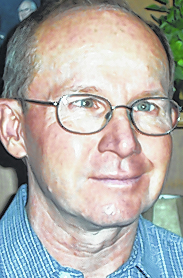
This is Memorial Day weekend. It’s time to head to the beach, follow the kids to a weekend tournament, or just kick back and take it easy. But it also may be a good time to thank a veteran. This came home to me as Terri and I went to Washington, D.C. on a bus trip this past weekend. (Yes, I know bus trips are for the “old folks.” But they drop you off as close as possible, feed you good, and you don’t have to fight the traffic. Besides, I reckon I now qualify as an “old folk.”)
Part of the trip was viewing the war memorials. The Korean War Memorial, honoring the 36,000 soldiers killed during the conflict, is really neat with the 19 soldiers on patrol. The Vietnam Memorial with its wall with all the 58,000 soldiers who gave their lives in that very unpopular war. Then there is the World War II Memorial.
What made it special was that as we were visiting the site, they were honoring World War II veterans. The Honor Flight group brings in those veterans, now frail and elderly, to see the memorial. Tourists, current soldiers, and others lined the sidewalk as the veterans, most now in wheelchairs, entered. Former Senator Bob Dole, a World War II veteran and instrumental in establishing the memorial, was there to greet them. It was special to be a part of those lining the sidewalk applauding and saying thanks to those heroes.
But there is no memorial to those over 6500 soldiers killed in America’s longest war. But there is a place in Arlington National Cemetery, which we visited Sunday, that has become sort of a memorial to those soldiers killed in Afghanistan and Iraq. In his book, “Section 60 – Arlington National Cemetery,” Robert Poole documents many of the 900 soldiers buried there from that war. While walking through that part of the cemetery, Terri and I saw the gravestones of many of those who died, most in their early twenties. We saw a letter leaning against a grave from a young son, written in crayon, to his daddy, whom he’ll never see again. There were notes from proud parents, writing about their son, gone way too soon. But there is no memorial yet for those killed in a war that most of us, while still going on, have thought little about.
Concerning this, Poole writes, “For most of the country, the longest war in the history of the United States has taken place largely out of sight, the casualties piling up in faraway Iraq and Afghanistan while normal life continued on the home front, with no war taxes, no draft notices, no gas rationing, and of the shared sacrifice of the nation’s earlier conflicts.”
The next day after coming home, thinking about those World War II vets, I went to see my buddy, Mr. Paul Holland. Some of you may know Mr. Paul. You may see him going out to the nursing home to see his wife, Doris, which he does every day. What makes this special is that Mr. Paul is 97 years old. But there is something else about my buddy that makes him special. He is a World War II veteran, and he has an interesting story.
Paul Holland was drafted into the Navy late into the war. He was married to Mrs. Doris and they already had a baby girl. He was assigned as a radarman to the USS Borie, a naval destroyer, and was sent to the Pacific to fight against the Japanese. The USS Borie was part of the U.S. fleet that bombarded Iwo Jima and Okinawa during the U.S. taking of those islands. Mr. Paul told me of how the ship was refueling from the aircraft carrier, USS Essex, during the Battle of Okinawa during a typhoon. A big wave carried the Borie into the underside of the Essex and caused considerable damage. (This happened on April 2, 1945.)
Mr. Paul then told me how the USS Borie was about 35 miles off the coast of Japan in August 1945, as the Allies prepared for the invasion of the country. In their desperation, the Japanese had started crashing their planes onto U.S. ships. You’ve probably heard about the Japanese kamikaze pilots and the damage they did to U.S. ships near the end of World War II. On August 9, 1945, Mr. Paul’s ship was crashed into by a Japanese kamikaze plane. The plane smashed into the mast of the Borie, just above the radar room, where Mr. Paul was stationed, killing 48 sailors and causing extensive damage. Mr. Paul said three other kamikaze pilots also attempted to crash into the Borie and finish the job, but they were shot down by gunners from a nearby U.S. destroyer.
What is unique is that this was the last kamikaze attack on an U.S. ship during the war. Three days earlier, the U.S. had dropped the nuclear bomb on Hiroshima, Japan, and on August 9, the same day of the kamikaze attack on the USS Borie, another nuclear bomb was dropped on Nagasaki. Mr. Paul said that it was only as their ship hobbled back to port the next week that they learned about the bombings and that Japan had surrendered.
This weekend, in the midst of all the Memorial Day activities going on, take time to talk to a veteran. Like Mr. Paul, they probably have an interesting story to tell. And remember to thank them for their service.

